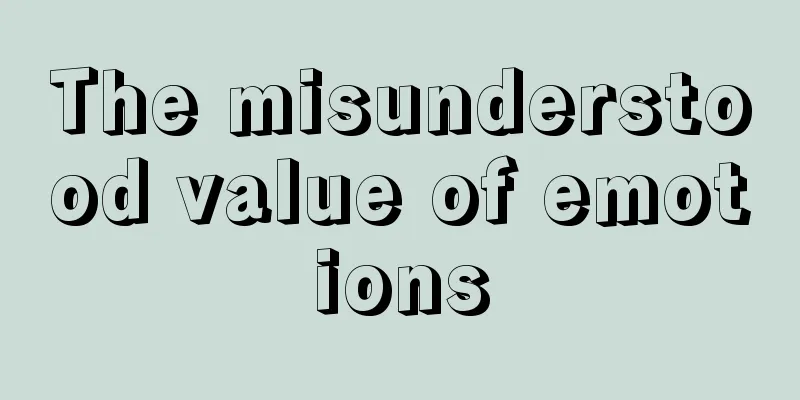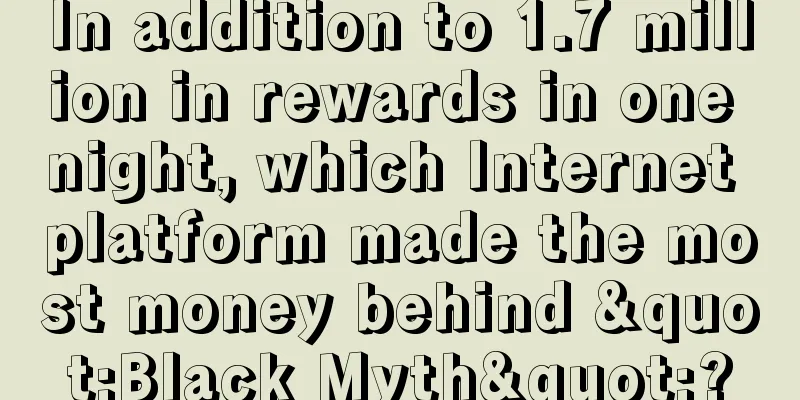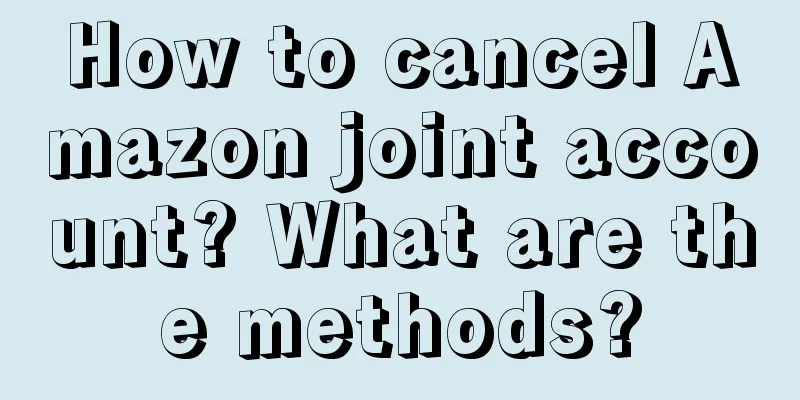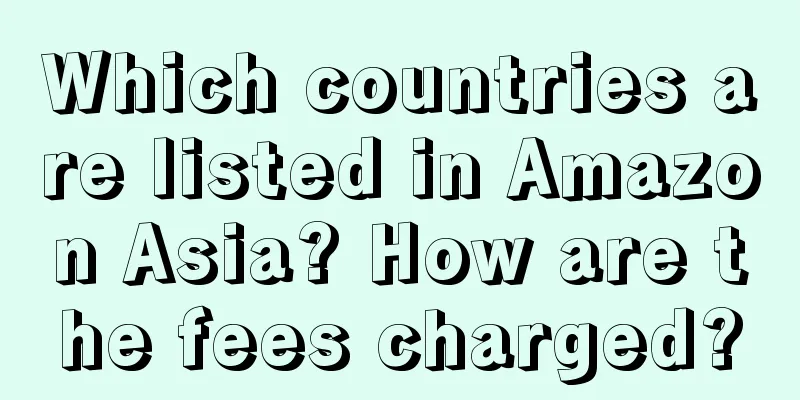The misunderstood value of emotions

1. Emotional value: true or false fireEmotional value is popular. Whether it is a brand or an advertising company, it seems unreasonable not to mention emotional value. Why is it popular? It's very simple. In an era when the market is involuted and low prices are king, behind the emotional value, there are four clear words: reduce costs and increase efficiency. For brands, the greatest significance of providing emotional value lies in: controlling costs on one end and increasing premiums on the other end: On the cost side, compared with real product upgrades or technological research and development, soft attributes such as emotional value: whether it is the aesthetic design of the appearance, the redefinition and communication of selling points, or user communication on the marketing side, have lower barriers to implementation and more controllable costs. On the consumer side, emotional value has both "differentiation" and "high premium". Possibility - users or consumers have become more and more mature and even cold in their rationality. The only way to make people willing to spend more money is to pay for emotions: “Emotional consumption is not calculated, because it is used to escape the fatigue and triviality of daily life.” It seems that utilizing emotional value is a very cost-effective thing for merchants to make money and users to be satisfied, and it is a tacit understanding between the two parties. However, is this really the truth? The fact is, for most brands, emotional value is a bit like a soap bubble in the air, which looks very wonderful but is actually difficult to grasp and will burst if poked. Here, we quote the original text of "Humanistic Business Review" (very sharp): “This represents a very typical group of people’s perception of brands: they almost equate brands with artistry, beauty, fashion, trendiness, and other vague spiritual values. We have also said that those who advocate the idea that “ brands in the past were mainly functional, while brands today are mainly spiritual ” will not happen even in another 100 years. The functional value of a brand almost always far exceeds its spiritual value. Any brand that is not based on strong functional value will not be successful. Among food and beverage brands, Yuanqi Forest has strong functional value, Luckin Coffee’s beverage-based coffee has strong functional value, beauty brands’ morning C and evening A have strong functional value, and Winona’s sensitive skin has strong functional value. In recent years, the few brands that have succeeded because of real users’ purchases have all had functional value, while those brands that vigorously promoted spiritual values have all been left with a dead end. The logic behind it is not difficult to understand: Compared with functional value, emotional value is more fragile and changeable:
Therefore, for most brands, betting on emotional value as a brand’s differentiated selling point and competitive advantage is too short-lived and too risky. 2. Who can provide stable emotional value?Are there any exceptions? Who can provide emotional value in the commercial market stably? It is not easily replaced by imitators that emerge one after another? Of course there is, and that is the charismatic anchor . As living people, they have huge advantages in terms of emotional value compared to brands.
Therefore, the charismatic anchor can be regarded as a group brand. In addition to the emotional value, it is natural to provide various forms of products and services to this group of people in the form of "buyer", "selection" and "optimization". Rose Box is a typical case. Zhang Xiaohui created a new combination SKU in her live broadcast room, the Rose Box. According to the idea of "solution", she combined products of different brands and sold them in packages. These boxes are the products that carry her value proposition. In this regard, Yu Rui has a point of view that China's DTC brands are likely to exist in the form of "buyer-style anchors" because they solve the problems of brand value and traffic channels at the same time. Compared with brands, anchors are much more efficient in obtaining traffic from the public domain and quickly realizing it. The emotional value provided by individuals is far more real, stable and difficult to replace than that provided by brands. Okay, let’s talk about emotional value. In fact, many smart students have already seen the clues: Why is it easier for individuals to rely on emotional value to build a stable business closed loop than brands? The reason is: the focus of emotional value is on value, not emotion . Emotions are changeable, and value is stable. The ABC theory of emotions has already explained this: This theory was created and proposed by American psychologist Ellis, in which A (activating event) refers to the event, B (belief) refers to the belief, and C (consequence) represents the result. Event A is only an indirect cause of emotional and behavioral consequence C, while the direct cause of C is belief B generated by the individual's cognition and evaluation of event A. B (belief) is the core element that causes all emotions and leads to different emotional perceptions, and beliefs are formed over a long period of time. Brands create events to stir up emotions, but people are the ones who can create sustainable emotional value through their beliefs and values. 3. Can brands continue to make money by leveraging emotions?Okay, let’s move on to the third topic we’re going to talk about today: What enables a brand to continue to make money is always value, not emotion. Instead of seizing the ever-changing emotional dividends, it is better to realize your own value. Regardless of the type of brand, the value lies in the specific problems that the product solves. According to the product ideas that people use to solve different types of problems, products can be divided into search-based, experience-based and confidence-based types.
Depending on the problem the product solves, the corresponding methods of "making money based on value or premium" will also be different. For search-based products, they rely on "trust value". The fundamental reason why these products or services are chosen by consumers, and even cost more, is "trust". The core purpose of brand value is to continuously build and strengthen consumers' trust in it: repetition brings trust, endorsement brings trust, and sales bring trust. For experience-based products, they make money by relying on “pleasure value” and continuously providing pleasant associations… Oreo, by integrating its products into various delicacies, such as dried persimmon fillings, ice cream, cakes, etc., constantly creates exciting and pleasant experiences; What attracts people to Harbin is the fairy-tale-like Ice and Snow World and the matching warm service, the frozen pears that are cut into slices and easy to eat, and the various cute little animals - these are the endless pleasant contents. Note that they are still product-centric and focus on creating a more pleasant experience around the product. For confidence-based products, the core is to create "belonging value", which we will discuss in detail in the fourth part. 4. How to build a brand with values by learning from peopleBefore we start the fourth part, let’s start with a detail, which is the brand’s “value advertising” or “emotional advertising” . To be honest, in the past few years as a judge for the Digital England Awards, I have found that the number of value-added or brand-emotional blockbusters each year is much greater than I had imagined. However, many business parties would question: What is the use of these advertisements other than winning awards? Or is the so-called brand goodwill just an illusory new coat for brands? To be honest, I thought about this problem for a long time while I was working on it. Now, my answer is: True brand value advertising has strong conversion power and driving purchasing power that can motivate people to take immediate action after watching it. That’s right, even though the ad doesn’t have any promotion or QR code, the user’s first reaction after seeing the ad is: “I want to join you by purchasing your products.” Why? There are too many examples of product value advertisements going astray - for example, caring about social events, caring about ABCD, paying attention to festivals and hot spots, paying attention to vulnerable groups, and having insights into young people... These materials are varied and seem to be able to become the "proposal" of brand advertising: as long as some beautiful and meaningful things are associated with the brand, they can bring goodwill, recognition and premium to the brand. To put it bluntly, it is the advertising company that deceived the client, and the client deceived the business. Of course, they themselves may not realize how deceptive this is. The basic logic and underlying ideas of truly effective brand value advertising must be: “What kind of people create what kind of products under what specific concepts, and what kind of value they create for similar people” Products should be the pillars that carry value and create a sense of belonging. In too many advertisements, products are just props, or only have a weak connection between the brand and the spirit of the story. Good value advertising is the best advertising for selling products. For example, LV’s Traveler series (a pair of handbags and luggage specially made for people who experience life), Timberland’s advertisement (a pair of shoes that will never get worn out specially made for people who keep walking), and Bananain’s brand concept film “Redesigning Basics”. Following this line of thought, we can then extend to “how to build a brand based on values.” Because people are the best value brand, we can learn from them to develop action plans:
The first point has already been answered above. Let me repeat, brand values refer to: “What kind of people create what kind of products under what specific concepts, and what kind of value they create for similar people” Here, if we make a more specific statement, it should be: solve real problems that resonate with users. In search-based products, this problem is known and explicit; in experience-based products, it is an inner worry; and in confidence-based products, these problems are related to the higher-level needs of human nature: social interaction, self-positioning, self-realization, etc. I won’t elaborate on the second point. I just want to make another appeal: marketing awards should stop promoting elements such as art, tonality, beauty, and hot topics. If the value cannot be inherently related to the product, these advertisements are just a waste of money. The third point is the exclusive connection space, which refers to the place where brands can communicate with users in a two-way manner. Many people will think of self-media or private domains. However, in today's fiercely competitive content industry, if you want users to pay close attention to self-media content, or tolerate soft advertisements in WeChat Moments and communities (except for coupons), it is difficult to achieve the desired effect no matter how sophisticated the content is. Therefore, we believe that there are two ways, which are efficient and immersive exclusive communication venues: people and offline scenarios. In the early days of lululemon, the initial ambassadors (yoga instructors) and their own employees were the core media, and the stores were used as scenes for in-depth interaction and communication. The same is true for Pangdonglai, where scene experience + employee service are the cornerstones of carrying values. The second part makes it very clear about the significance of “people”: for a brand, ambassador-type employees, charismatic anchors, and the founding team itself are the most valuable channels of communication. The essence of offline scenes is also people. In the space of online traffic, people often stay in fragments and pass by in a hurry. Only offline can they carry more experiences, exchanges and integration until they have a sense of belonging. Fourthly, in the stage where supply is king, product line expansion mainly relies on supply chain advantages; in a demand-driven market environment, product line expansion revolves around the needs of a group of people, with greater flexibility and agility in product supply, even across categories. For confidence-based brands, this means that they can expand their product space horizontally driven by values - creating diversified products based on the "same concept" to meet the needs of similar people (who have similar values). For example, miumiu created a "useless and beautiful" series for "rebellious little wildcat" ~ from hairpins, diamond underwear to daily bags and clothes, all based on the same values and the same narrative logic of people: "Young and energetic, not following the rules, one foot in the mortal world to find some feelings, the other foot to keep the bottom line of the nobility, a little wild, but not to the point of betraying the entire family, naughty and delicate." V. ConclusionThe fundamental reason why we spend so much time discussing the value of emotions is that too many people want to capture the value of emotions as quickly as they can, just like grabbing traffic dividends - but emotions are more difficult to capture and grasp, and instead they are dismissive of or find it difficult to take action on the value behind the emotions. Author: Lan Lan WeChat public account: Taro and Cat Talk (ID: taro_cat) |
Recommend
No experience, no writing
Copywriting without experience is like instant noo...
Don’t let sales ruin the brand you worked so hard to build!
In the journey of brand building, short-term sales...
What are the entry requirements and fees for Jumia? What are the characteristics?
There are still many merchants opening stores on t...
Heytea is competing for the Paris market, Yili is “buying shares in advance”…are these “fancy ways” of Olympic marketing?
The 2024 Paris Olympics is about to kick off. Its ...
Xiaohongshu advertising follow-up and data collection
When operating Xiaohongshu, many bloggers don'...
How to open a store in shein? What are the advantages of shein?
Shein is a cross-border brand that has developed o...
99 Douyin coins/time, easily earn 2,000 yuan per live broadcast
The author of this article shares with you a money...
Can I do cross-border e-commerce by myself? How can I do it by myself?
When it comes to cross-border e-commerce, many peo...
What does Amazon International Station mean? Can you make money?
Some platforms have international sites, such as o...
Can replicating "Altay" become a long-term business for long videos?
This article explores the topic of how long video ...
Where is Amazon's customer service center? How do I access it?
Many people still have questions about the Amazon ...
Is it easy to sell things on Amazon? How is it like to sell things on Amazon?
Amazon has a lot of traffic, so although there is ...
Spending thousands of yuan to date a "paper man", who is creating dreams for 2D girls?
Why would someone be willing to spend thousands of...
Digging into 3,000+ data from 15 categories in the 3.8 promotion, who is growing?
This year's 3.8 promotion has passed, but the ...
In the era of consumption downgrade, which brands are popular in Japan? What lessons can we learn from them for the Chinese market?
Recently, consumption downgrade has swept across t...









